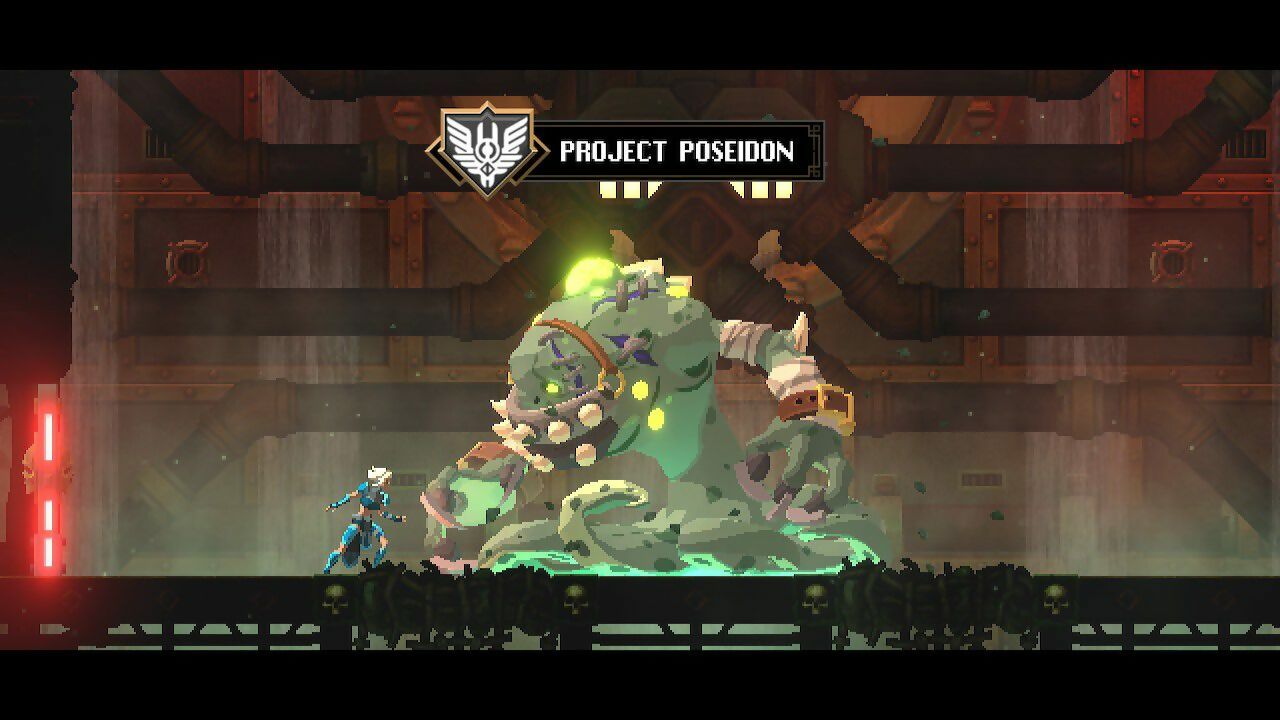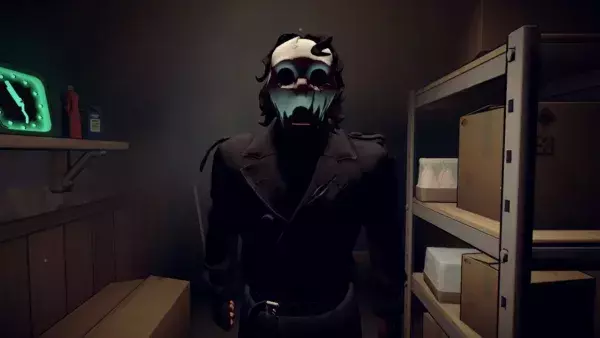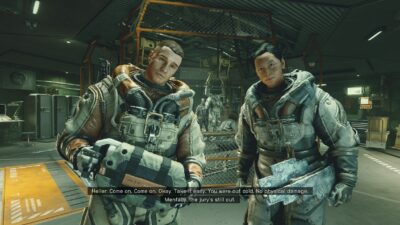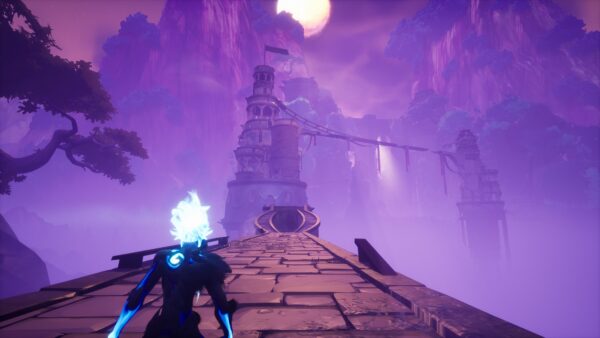
Most enemies in Foregone patrol a single platform or stretch of floor and refuse to move beyond it, even when trying to kill you. Within their well-trodden groove they’re comfortable, capable.
But venturing beyond that narrow patch is a notion too scary to contemplate. It’s a feeling that per-meates the whole game.
Foregone’s pitch is simple – Dead Cells but not a roguelike. It’s a linear series of locations with min-iature bursts of exploration, slim story elements, and colour-coded loot.
It’s Dead Cells because, well, for one, it really looks like Dead Cells. Darkened foreground struc-tures contrast against colourful, pixel-edged backdrops depicting the aftermath of a world-ending war – from the rusting shells of machinery littering nature to underground labs hinting at cruel mili-tary experiments. Faceless sentinels stroll the halls with exaggerated poise and fluidity. Their blocky shading evokes a nineties style that never really existed.
Combat is also infused with strands of Dead Cells’ DNA. It’s not quite as fast and frantic, but each impact in the brief fights feels more punchy and deliberate. Short- and long-range weapon attacks chain smoothly with jumps and slide dodges.
A flurry of swings and gunshots sees foes dramatically slump over, a plume of multicoloured loot baubles spewing in their wake. And while these corrupted beasts and soldiers don’t offer much resistance alone, their careful arrangement in mixed groups demands hit-and-run tactics and care-ful target prioritisation.

The Dead Cells vibe is rounded-off by the game’s unobtrusive acoustic soundtrack.
But it’s limited. Foregone plays like it’s worried about putting its solid foundations under too much strain. New abilities gained from beating firm-but-fair bosses are industry standards like air dashes and ground stomps, while supplementary combat powers add only a thin icing of strategic depth.
There are also just five short- and five long-range weapon types, and choosing which to use is mostly a matter of style preference, or opting for the biggest raw damage output among your col-lected specimens. Equipment perks and character upgrades, meanwhile, often come down to triv-ial percentages. Do you want 1% extra health or 2% more movement speed? A 4% chance of inflict-ing this status effect or that one? It’s hard to care.
This would matter less if the levels themselves were more expressive, but their neat blocks of rooms and platforms feel agoraphobically constrained. Some areas split briefly, asking you to hit multiple switches to open a door. There are occasional hazards to avoid and some secret rooms to discover. But no location or scene sticks in the memory, unless it’s due to some cosmetic splen-dour.
Foregone looks, sounds, and feels good. It just doesn’t capitalise on the biggest advantage it has over Dead Cells’ procedural construction – the opportunity to handcraft each stage, enemy, and weapon with a unique identity and challenge. As its monsters stall on the edge of their tiny territo-ries, it’s as if a strict roguelike algorithm was dictating the boundaries after all.
Highlight
Among Foregone’s pile of nondescript swords and spears, there’s something a little more original and tasty – the neatly monikered ‘gunchucks’. And there’s nothing more satisfying than pairing these explosive sticks with a shotgun for some devastating close-quarter mayhem, a beefy clunk-boom behind every strike and shot.
Verdict: 62%
Foregone has pleasing style and rhythm, strait-jacketed by some rather plain design.
Genre: Action/Platform
Format: Switch (tested) / PC
Developer: Big Blue Bubble
Publisher: Big Blue Bubble
Price: £26.99
Release: Out now





